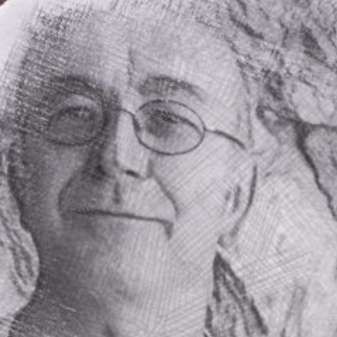Formerly St Andrew’s Church, until pairing up with St George’s at the West End of the city, this Andrew Fraser building is doubly unique: it was the first elliptical church in Scotland; it has the oldest “peal of bells” in the country. Sadly silent since 2002, the bells are thought to have inspired Lady Nairne’s folk song Caller Herrin’. This Edinburgh Quartet Rush Hour Concert was the church’s first musical event since recent refurbishments, the aroma of paint from which informed the evening air.
The programme’s single work, Beethoven’s 1809 String Quartet no. 10 in E flat, “Harp”, Op. 74, was preceded by a reading. Dr Roger Williams of the University of Aberdeen, a trustee of the quartet and the author of fine programme notes for this concert, read an extract from a text contemporary with the work at hand: an account of Baron de Trémont’s visit to Beethoven’s apparently shambolic home in French-occupied Vienna. Bearing a letter from the composer’s friend Anton Reicha (1770–1836), Trémont was not without trepidation, knowing Beethoven’s view of the French to have soured since Napoleon had declared himself Emperor. This situation could not have been helped by the imminent destruction of all properties on the ramparts, including Beethoven’s apartment, and the fact that mines were already in place for the task. However, despite language barriers and Beethoven’s deafness, the two managed to communicate on matters cultural with sufficient resonance to occasion further invitations to visit. From this reading I learned that Beethoven idolised Shakespeare. Initially, this surprised me but, on reflection it seemed obvious that the composer would be drawn to the music in the Bard’s words and the drama in his narratives.
Bows drawn, the quartet were on the point of easing into the Poco adagio – Allegro, when leader Tristan Gurney indicated an impromptu pause to allow a couple who had just arrived time to find a seat. I thought this a nice touch. Rush hour punctuality can be challenging at the best of times; navigating the ever-changing game of The Crystal Maze that is Edinburgh’s tram works is a nightmare. Had I been a flustered latecomer, the angular, contrapuntal introduction of this movement would quickly have drawn me out of any self-awareness. Its attention-grabbing melodic language, couched in subsiding and reaching harmonies, endowed the arrival of the home key and theme with a reassuring inevitability. The Allegro took off with joyous vigour, a feature I noticed particularly when the first violin was required to drop a double octave which, given the pace, seems far. This was nimbly executed. The church’s acoustic struck me upon hearing the pizzicato passages which ping-pong round the quartet, presumably earning the quartet its nickname. Despite carpeting and soft furnishings the sound is very rich here and well suited to the quartet medium. The mix of clarity and blending was at its best during an intensely played ascending sequence of lovely harmonies which form the dramatic dénouement of the development section of this sonata-form movement.
Although considered a middle-period work, this quartet’s second movement, Adagio ma non troppo – like the aforementioned Poco adagio – points to the harmonic adventurism associated with Beethoven’s late quartets. Already an intimate medium, Beethoven’s deafness surely amplified the interior feel of these works. The Edinburgh Quartet clinched the intense tenderness in this serene movement. At no point was there the sense that profundity might edge towards melodrama. As a fellow audience member later commented to me, they have the feel of a quartet who play together very often. This is perhaps all the more remarkable when one considers that Gordon Bragg has just recently assumed permanent occupancy of the second violin chair.
Fuelled by the four-note motif which opens Beethoven’s Fifth Symphony (published in the year of this quartet’s composition), the Presto is a highly energised affair and was delivered with great drive here. The final movement, which afforded violist Jessica Beeston a chance to shine as melodist, prompted me to speculate on the compositional ingredients which allow an Allegretto to follow a Presto without the sense that one has dropped a gear. Clearly the is more to joie de vivre than mere pace. The closing bars were played with the affirmation and optimism with which I felt the composer had imbued the movement and the audience responded warmly, as though refreshed.
Following the performance the quartet resumed their seats for an informal question and answer session. Most members of the audience were able to remain for this and some very interesting questions and discussions arose, covering such topics as repertoire, acoustics, rehearsing, interpretation and cuing in chamber music. This combination of performance, contextualising readings and conversation feels like a great way to fill a crepuscular hour.


